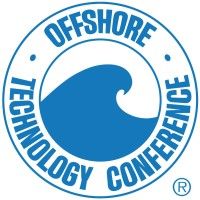Field-Proven and Emerging Technologies for Safe, Efficient, and Sustainable Well Abandonment and Decommissioning
Thursday, 7 May
Room 312
Technical Session
This session presents field-proven techniques and new technologies improving the safety and cost-effectiveness of well abandonment and decommissioning. Topics include thru-tubing cement barrier evaluation, hydraulic disconnect plug applications, and conductor removal innovations. Additional papers introduce modeling tools for plug performance and sustainable materials such as poromechanical cements and machine-learning-optimized geopolymers. Case studies from onshore to ultra-deepwater environments demonstrate how improved planning, digital tools, and advanced materials enhance reliability and efficiency. The session provides actionable insights for operators and service providers working to deliver safe, sustainable, and economically viable decommissioning projects.
Chairperson(s)
Sponsoring Society:
- American Institute of Chemical Engineers (AIChE)
-
1400-1418 37064Field Testing Of Thru-tubing Evaluation Of Casing Cement Barriers
-
1420-1438 36845Technological Challenges In Well Decommissioning: From Onshore Wells To Ultra-deepwater Environments
-
1440-1458 37018Destina Sub - Strategic Framework For Efficient, Innovative And Sustainable Subsea Decommissioning
-
1500-1518 36875First-time Application Of Abandonment Plugs With Hydraulic Disconnect Tool In Deviated Extended Open-hole Intervals: Field Success In Indonesia
-
1520-1538 37151Enhancing Efficiency And Reducing Risks Through Detailed Front-end Loading Process In Well Abandonment
-
1540-1558 36788Poromechanical Method To Tailor Cement Plugs For Long Term Integrity
-
1600-1618 37036Optimization Of Brazilian Rock-based Geopolymers Using Response Surface Methodology And Machine Learning For Sustainable Zonal Isolation
-
Alternate 36914A Computational-based Framework For Modeling The Plug And Abandonment Of Oil And Gas Wells
-
Alternate 36882Use Of 40-year-old Industry Proven Technology And Its Adaption To Meet Current Temporary Abandonment Challenges


